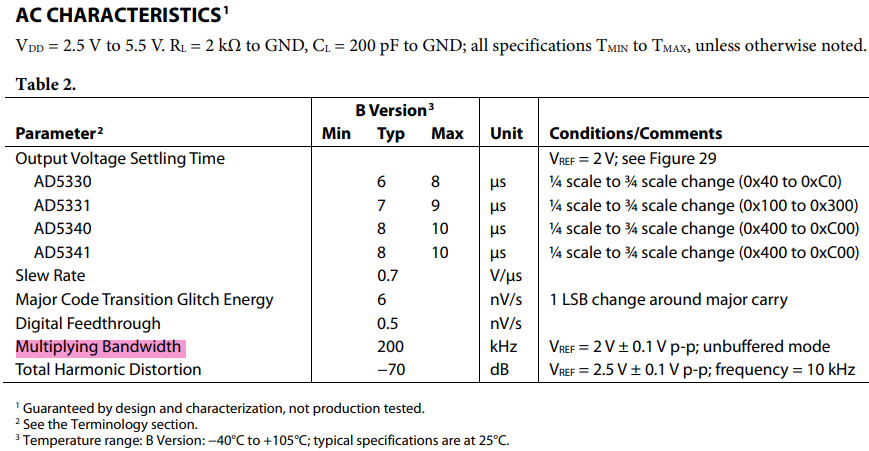I'm struggling to understand what it means for a DAC to have a Multiplying Bandwidth of 200kHz. Does it mean that the max frequency component in the DAC's output cannot exceed 200kHz for reliable operation?
Context: My project is to build a special arbitrary waveform signal generator, and currently I am planning on feeding a Parallel interface DAC with digital data to generate signals.
Also the relevant datasheet describes multiple DACs, I plan on using AD5331 which has an unbuffered output (I guess that implies that they're not using an op amp at the DAC output) - if the definition of multiplying bandwidth only applies to DACs that contain amplifiers then would this spec be irrelevant to AD5331?
Following are relevant snippets from AD5331's (chosen DAC) datasheet:


